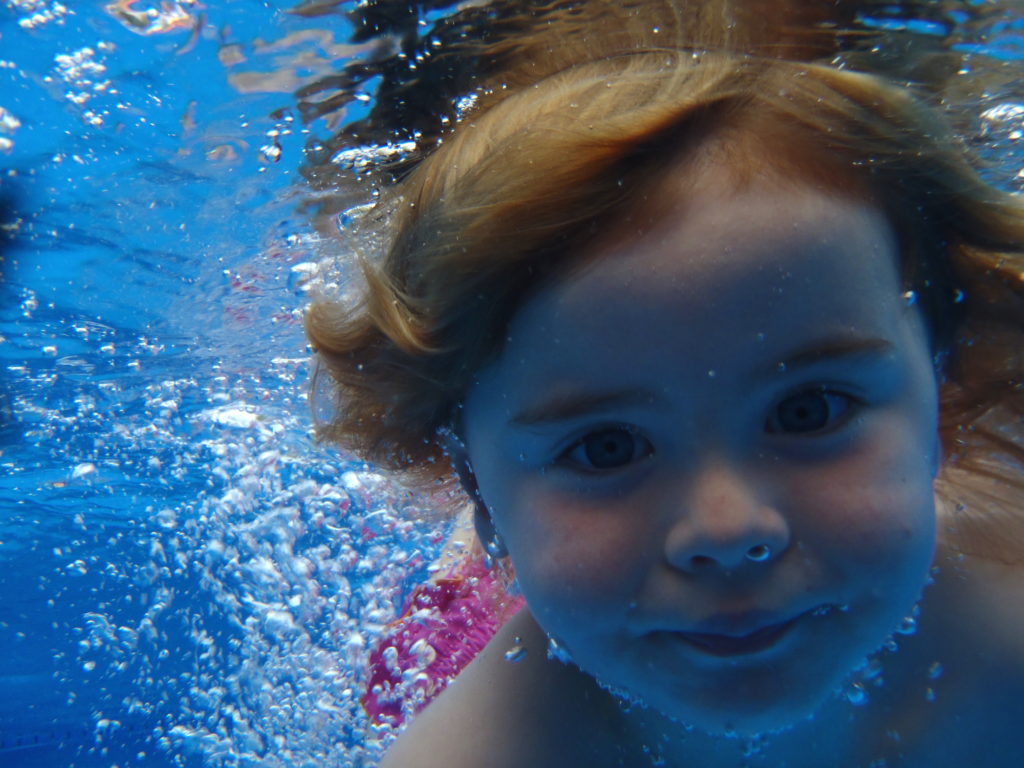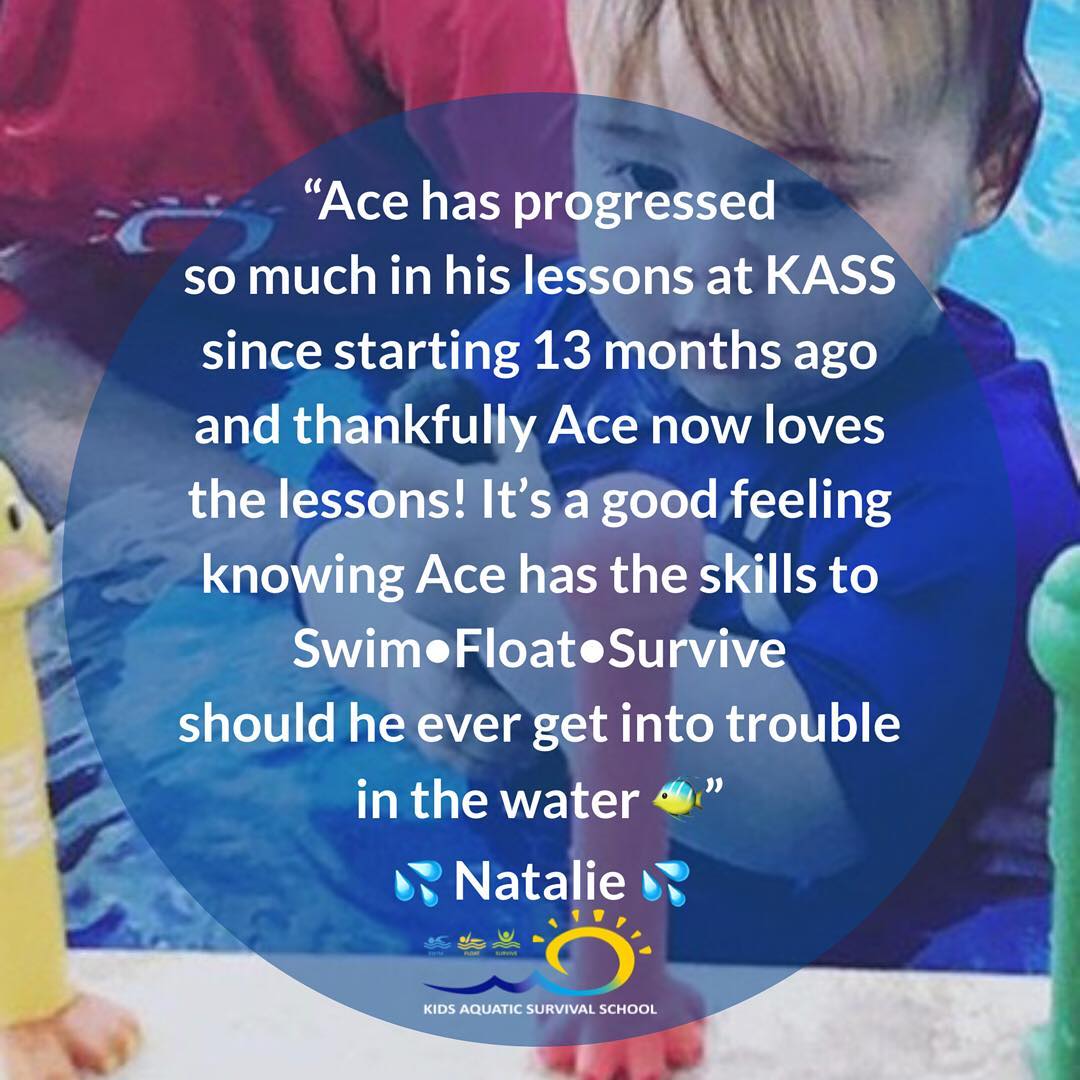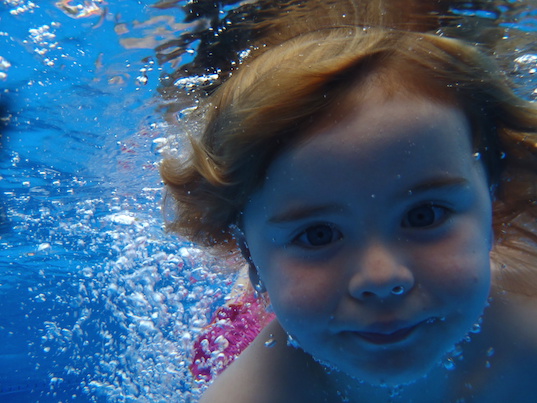
We have many children aged 5 years + that come to KASS from years of traditional swimming lessons. Some have been taught:
1. Wearing floatation devices
2. With Parents in the water with them
3. Wearing goggles
4. In a vertical swimming position. Whereby the child lifts their head to breathe and generally swims in a vertical position rather than horizontally.
The above-mentioned are aids we do not use in our KASS survival program and therefore when the child commences lessons with KASS, they might be out of their comfort zone initially. Once these bad habits (if any) have been overcome, we find older children progress very quickly as they are usually already water aware.
When infants and young children commence swimming lessons with KASS we encourage them to roll over to float for every breath. With older children they may not need to roll over for every breath as they have the strength to lift their head. We therefore, encourage the child to swim horizontally with their head down in the water, take a breath and again head down to swim.
Older children still need to be able to hold and maintain a floating position in order to rest if safety or the edge is too far to swim continuously. This enables the child to break up a large swim distance into shorter more frequently swims.
In addition, older children may refuse to open their eyes under water without goggles. At KASS we want children to be comfortable to swim without goggles and they are not permitted whilst undertaking survival training. The reasoning behind this is should a child accidentally fall into water, they may not be wearing goggles and we want the child to not panic and open their eyes to see where the steps, edge or safety is.
Further details on why KASS say no to goggles is explained in our most recent blog ‘No Goggles’
Call 1800 543 779 or email [email protected] to book your child into our accelerated survival program to increase their water safety.




